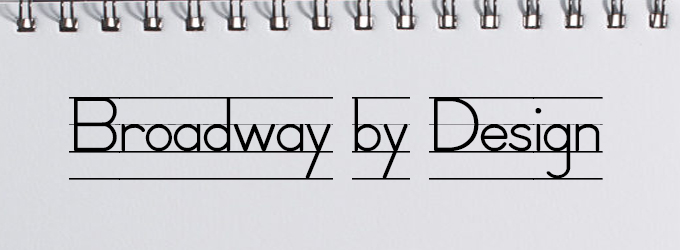Broadway By Design: THE NOTEBOOK
The Notebook is running on Broadway at the Gerald Schoenfeld Theatre.
In Broadway by Design, BroadwayWorld is shining a spotlight on the stellar designs of this Broadway season, show by show. Today, we continue with the creatives from Broadway's most captivating new love story, The Notebook- Scenic Designers David Zinn and Brett J. Banakis, Lighting Designer Ben Stanton, Projection Designer Lucy Mackinnon, Sound Designer Nevin Steinberg, and Costume Designer Paloma Young.
In The Notebook, Allie and Noah, two people from different worlds, share a lifetime of love despite the forces that threaten to pull them apart in a deeply moving portrait of the enduring power of love.
Where exactly did the design process begin? For scenic designers David Zinn and Brett J. Banakis, it was with the concept of memory.
"We began thinking about this show's scenery through the lens of memory, specifically through the idea of fragmentation and the unreliability of memory," they explained. "We wanted the main locations--the nursing home where Older Noah reads to Older Allie, the dock where Younger Allie meets Younger Noah, and the house that Noah builds for Allie--to feel like shards of memory appearing out of the darkness, sometimes in fragments, sometimes in repetition, sometimes complete, sometimes incomplete, but all part of a cohesive picture of the lifespan of Noah and Allie. It was our goal to have the audience experience of watching the show to relate to the experience of Allie conjuring and eventually remembering the world of her life with Noah.
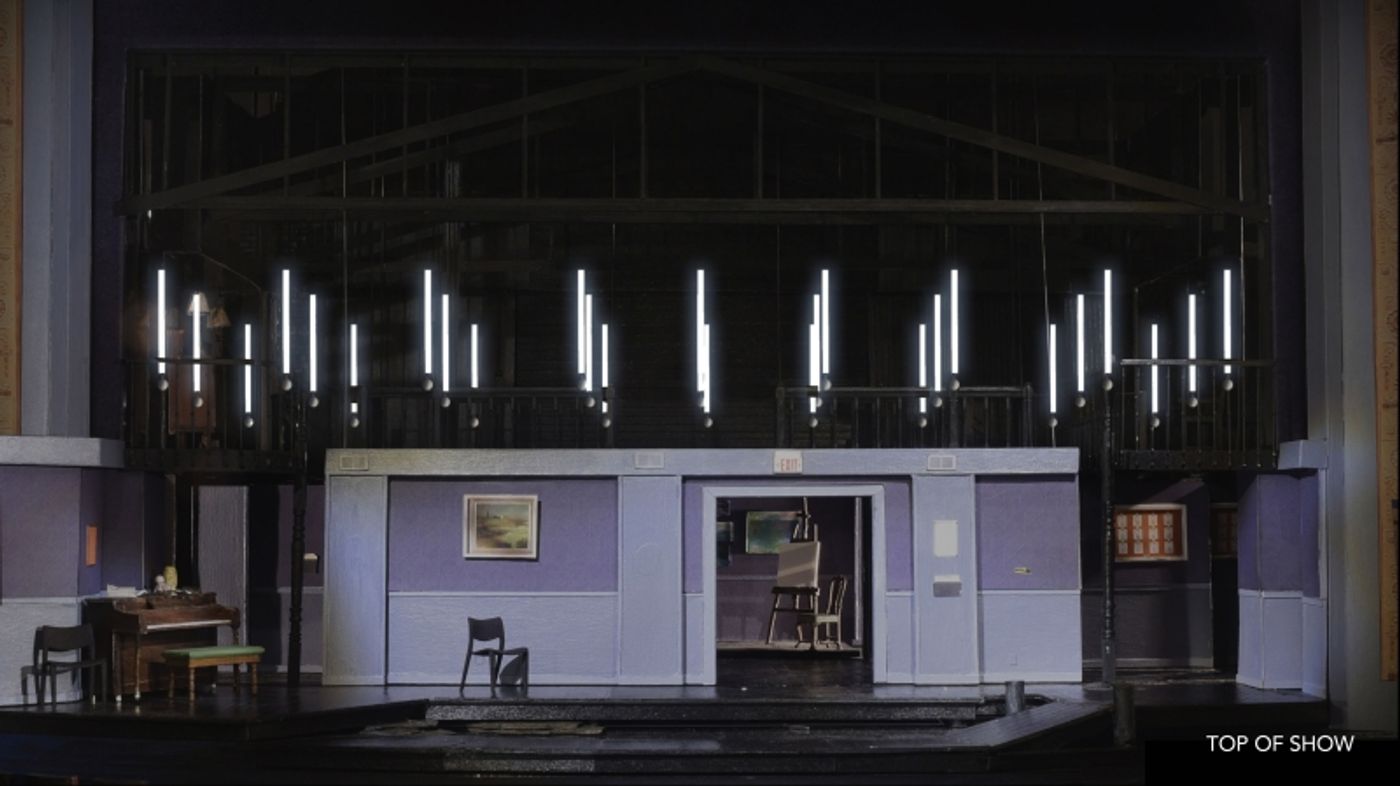

"We designed the main structures and surfaces of the set to be a collection of house construction textures: beams, clapboard, brick, stairs, various handrail types, gables, doors and windows, conjuring the visual world of the house Noah built for Allie. We affectionately refer to this as the "Ghost House." All of these textures are painted in a beautiful inky black that disappears into the void when not lit. We envelope the set within a rich black plexiglass surround that reflects the actors and the details of the world, mirroring and multiplying while simultaneously swallowing up light."
Memory was also a key design inspiration for sound designer Nevin Steinberg. "Memory portrayed as non-linear, parallel action was an exciting component of thinking about the design of the show," Nevin explained. "Not just “what do we remember?”, but “How do we remember” is an very provocative and compelling question for design. Words, music and sound are so present and emblematic in our memories and of course, in the play. Older Noah even says it explicitly to Older Allie: “That’s because the brain keeps music in a special place, apart from the rest of the memories. So it’s the last thing we forget.” I choose to think the same thing about all the things we hear—and that provided a real roadmap for how sound design could play a part in this piece."

Lighting designer Ben Stanton, ran with themes from the source material. "The story of The Notebook is universal and elemental. It’s about life and death, love and illness, and devotion to the people you love. I was deeply inspired by the beauty and simplicity of the source material, and by Ingrid Michaelson’s gorgeous music. I wanted to reflect these deep emotional themes and honor this story with a beautiful design that would invite audiences to join Noah and Allie on their life long journey.
"Water elements figure prominently in The Notebook, and we use water reflections (created in combination through lighting and projections) as a metaphor for Allie’s memories. As a person who suffers from dementia, her memories are fluid and inconsistent but also very powerful. We use reflections on the actors faces and bodies as well as on parts of the set. Sometimes it’s dramaturgical, though often it’s more of an energetic gesture meant to bring the whole space to life.
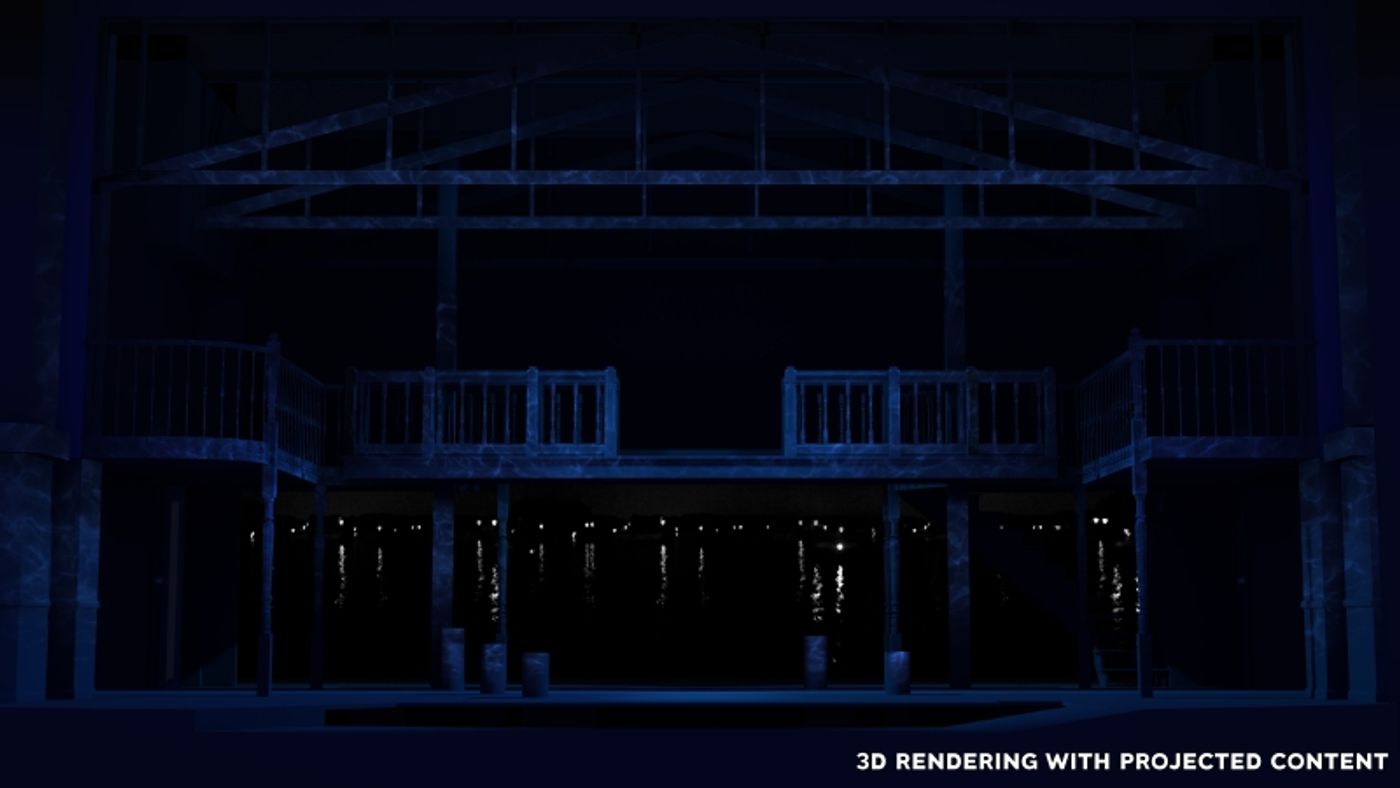

"The story travels back and forth between the past and the present, so the textures and colors of the lighting and video designs tend to oscillate between representing memory and material things," added projection designer Lucy Mackinnon. "Water reflections, for example, are essential textures of the world in which young Ali and Noah meet as teenagers - it’s summer in the mid 1960s, and they spend all their time outside - but they also stand symbolically for Ali's and Noah's memories, and for older Ali's fraught interior life. Ben and I were inspired to create designs that give a sense of place but also work to translate these characters' experiences into a language of poignant and poetic symbols that can easily be understood."
Costume designer Paloma Young drew inspiration from all over. "[I looked at] sources as varied as Model Beverley Johnson in summer-wear in 1970s Vogue to my aunt who is an AP Art teacher! It was important that the clothes feel like clothes, not costumes, specific and dramturgically and historically true to each version of Noah and Allie, while at the same time transcending the 1970s, 1960s and 2020s—Memory can be poetic, fuzzy, slippery—you should be able to squint and imagine you're looking at the 1930s, 1940s and 1990s."
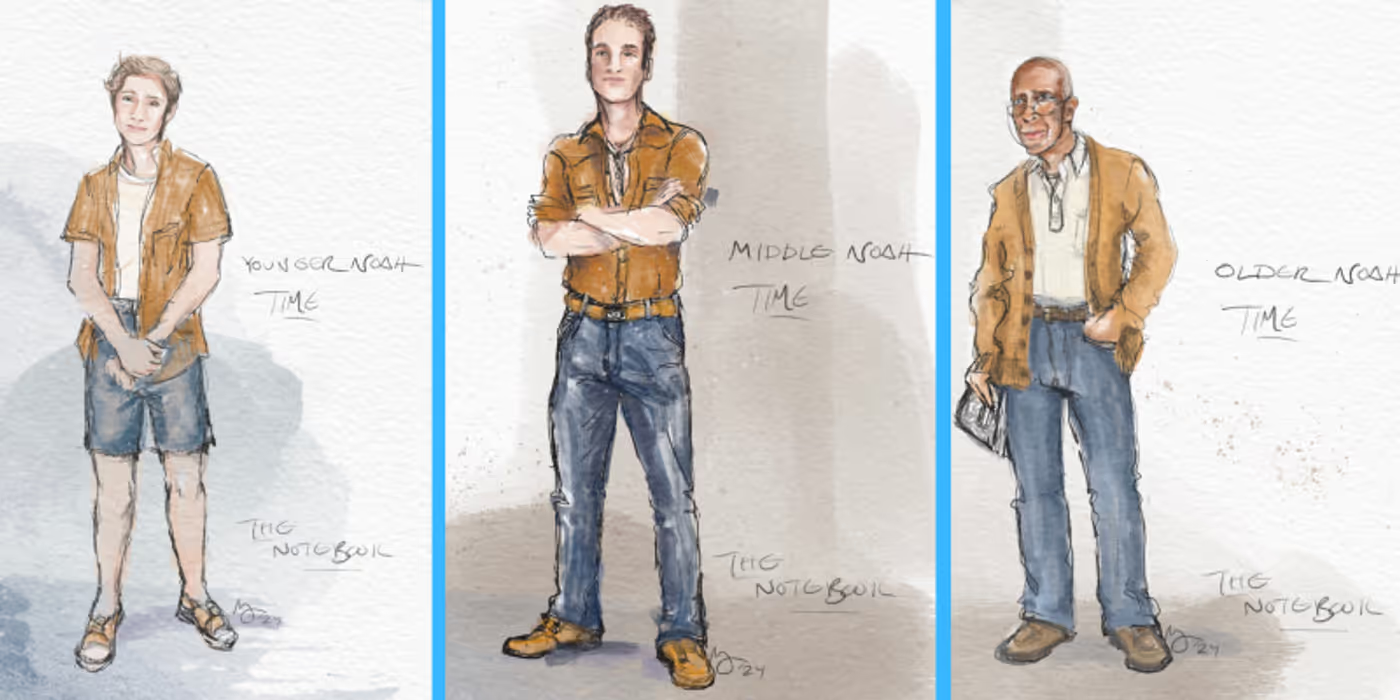
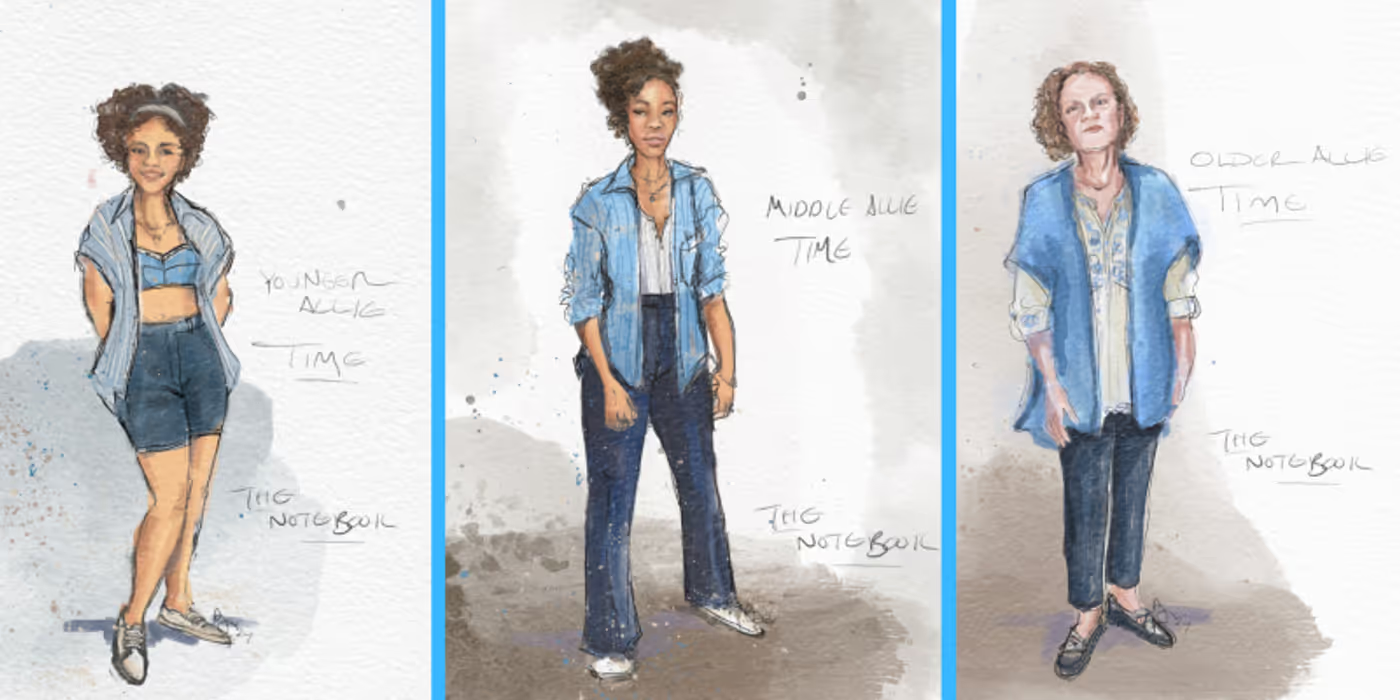
Where did the designers find their biggest challenges? For most of them... water. "On a very practical level, the Allie rain dress," said Young. "I was certain our 1970s Middle Allie would 100% have a Diane Von Furstenberg wrap dress that she packs for her return visit to meet Noah. It was right on character and class (a rich girl with the heart of an artist!), would function for a believable easy off *and* on onstage and would look VERY SEXY when wet. That said, we needed to make our own version so we'd be able to have multiples and have control over color and print.
"Ultimately, my amazing associate Annie Le formed a great relationship with a mill in China (hi Tina!), and we collaborated in creating the fabric from scratch—dying the yarn the right shade of blue, milling the jersey in the correct weight, getting the print the right scale and color. After our issues with the fabric for the Chicago run, we started last August trying to solve the rain dress fabric, and there were so many dead ends and back and forth that the final yardage was delivered to the maker only 2 weeks before tech. Whew! The dresses were beautifully built by Tricorne Inc and lovingly maintained by our union wardrobe crew who rinse and air dry them every night."
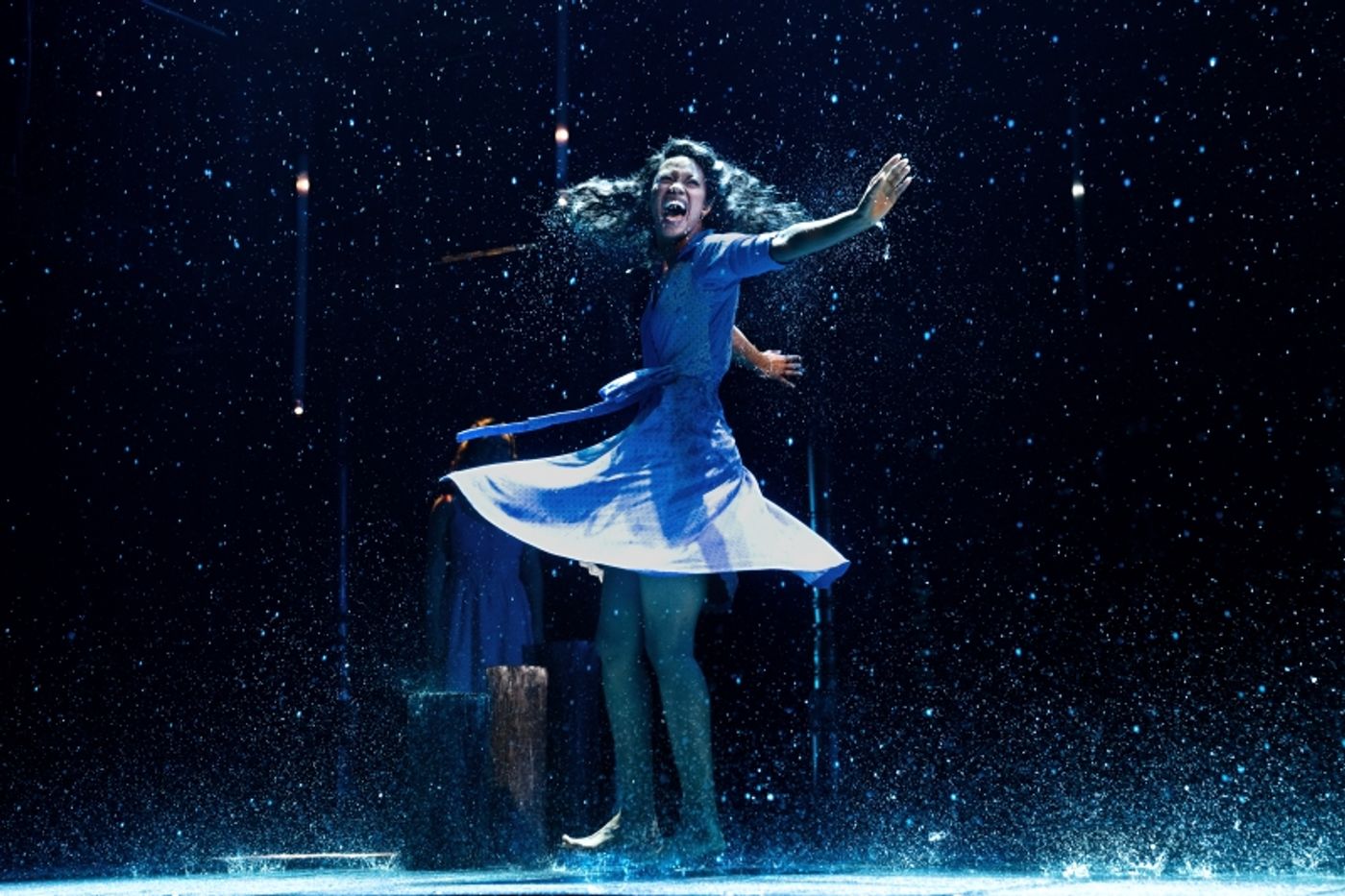
"One of our largest challenges was building a set that allows for the full realization of this scene between Noah and Allie in the rain, complete with actual water raining on stage," explained Zinn and Banakis. "In addition to this rain special effect system, our design includes a pool of water downstage over the orchestra pit, which all works alongside traditional scenery delivery systems such as scenery that tracks, flies and pops up out of the floor. We had an immensely robust process with Hudson Scenic Services, our scene shop, to develop a floor that is non-slip when wet, that drains most of the rain water through it, that structurally looks like a dock at the water's edge, and that allows for all the pop-ups and pallets to keep the scenery moving through memory, place, and time.
"We worked very closely with J & M Special Effects on the rain system itself, which includes 3 different types of water droplet generators, to create several different stages of rain through the course of the sequence. J&M also worked with us on the pool of water downstage, which needed to be a functional acting space for our characters, a reflection pool for our lighting designer, and a flowing river effect to place us texturally at the water's edge during the river scenes."
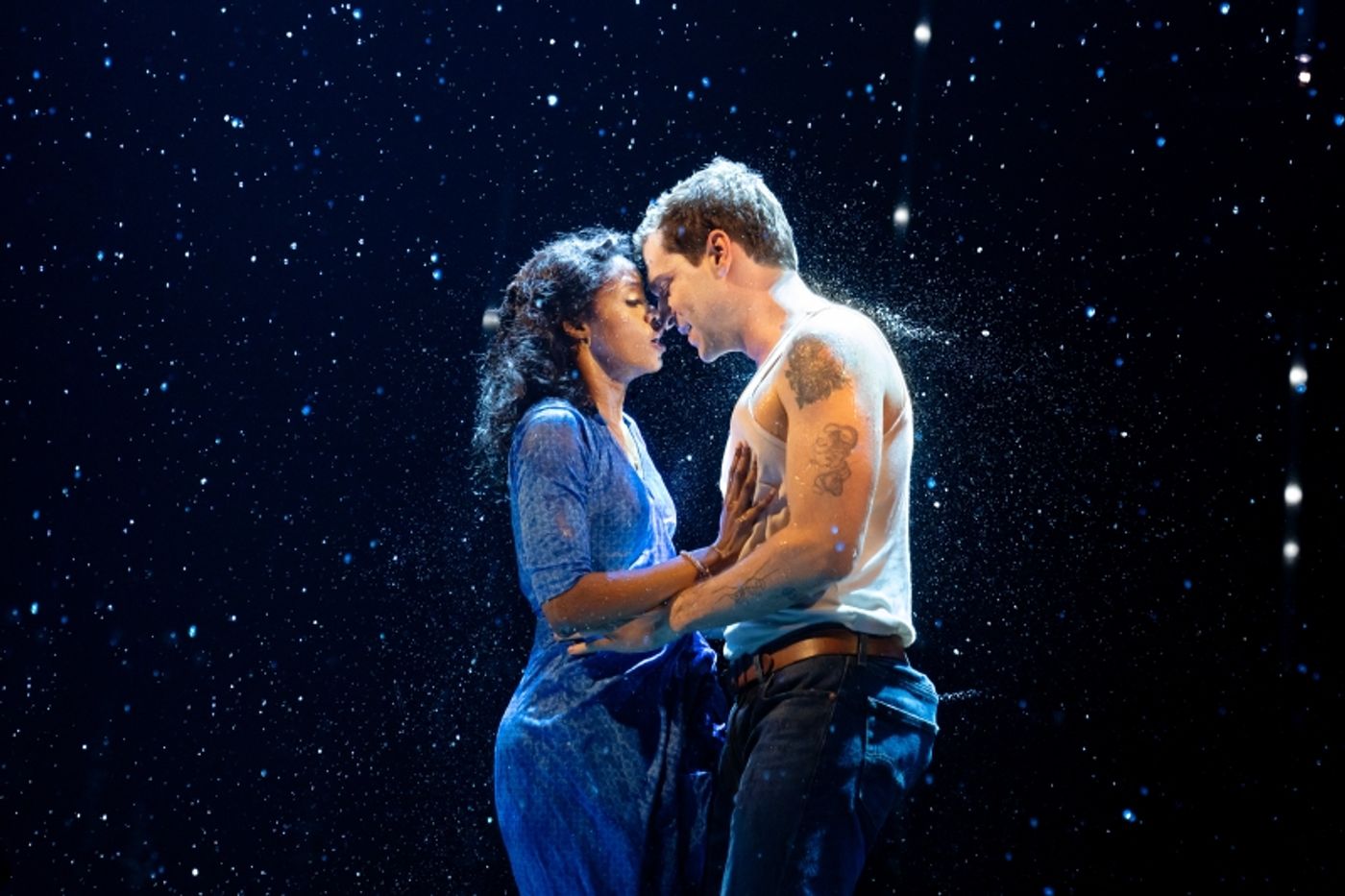
"Blending the lighting and video designs together was a challenge," added Mackinnon. "Water plays a huge part in our story, and water reflections bear so much meaning. But Ben’s lights could not send reflections back onto the set. They cast beautiful reflections onto the actors, and came down stunningly into the house, but the angles available to him didn't permit the reflections to hit surfaces upstage. So, to fill in these spaces, we used video.
"Of course, we didn’t want the audience to know we were using projections in this way, or at least we didn’t want the audience to be able to perceive where the video started and the lighting ended. To create video that looked like light, we studied what water reflections looked like in the theater and how they move across the walls, then built video content that mimicked it. From the speed of the water's movements, to its color, to its direction, we tried to make video blend with lighting. We then projected with enormous care onto slight, three-dimensional surfaces rarely used for video projection, such as delicate posts, columns, and banisters, and avoided the large flat surfaces that would more commonly be used. Our goal was to create a design that extended the lighting and subtly added movement and animation to the stage in ways that felt magical."
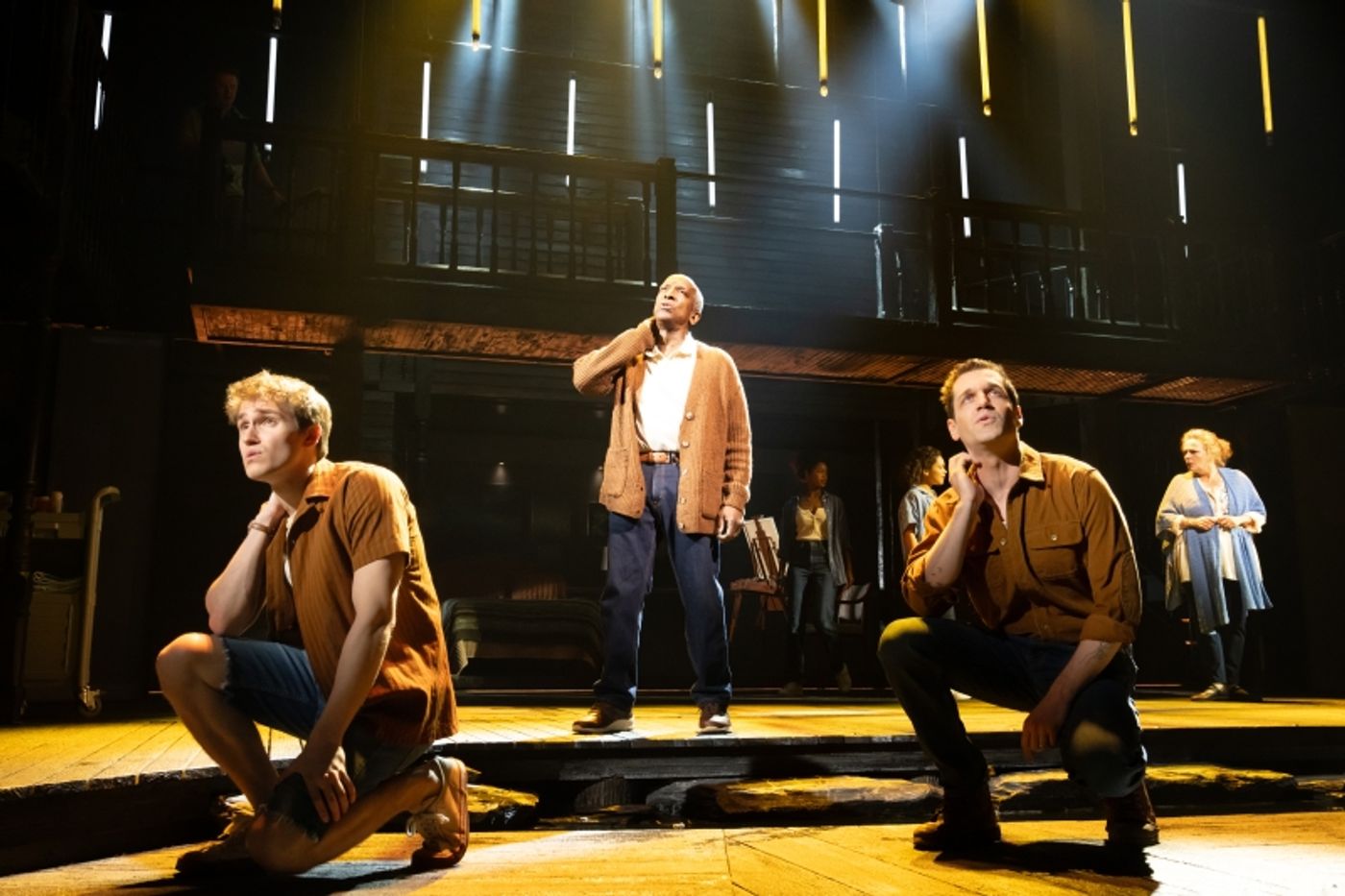
"One of the challenges of the [lighting] design was to be able to hold both the present day and the past on stage at the same time," said Stanton. "One of the ways we achieved this was to use rich colors and textures in the memory scenes to help the audience feel the joy and excitement of Noah and Allie’s youth, and contrasted that with a cold, clear palette to ground the scenes that take place in the present.
"One of the unique elements of the set design are these custom built, flying lighting elements that float above the stage. Depending on how they are illuminated, they can look like solid fluorescent tubes, twinkling stars, or undulating water, and they help us move seamlessly between the present and the past and from scene to scene."
"I think that the triangle among the intimacy of the relationships, the depth of the characters’ emotions, and the scale of the human experience writ large was a big challenge," concluded Steinberg. "Figuring out how to navigate the size of each moment, the surroundings or frame of each scene, and the sense of connection to a universal human condition—this is what makes the musical unique, difficult and so rewarding."
The Notebook is currently running on Broadway at the Gerald Schoenfeld Theatre.


